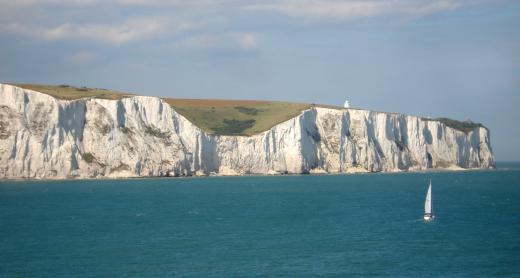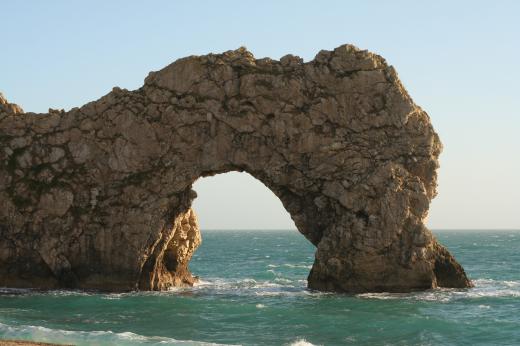What Are Geological Formations?
 Mary McMahon
Mary McMahon
Geological formations are groupings of rock with similar characteristics. In geology, the term refers specifically to geological strata, while laypeople may refer informally to outcroppings of rock or interesting geological features as geological formations, even though this is not technically correct. Studying and identifying formations is a key part of geology, and it allows geologists to do a number of things, from dating the landscape to identifying useful mineral deposits.
Visualizing geological formations is easiest to do when one things about the landscape in cross section. If a hillside is sliced in two, layers of geological material will appear. When materials in a layer are of similar age or composition, they can be termed a geological formation. These formations can be bundled together in large groups, or broken down into smaller segments called members, to help geologists describe, explore, and study them. When a geologist finds a formation which he or she thinks is new, the information is presented to the authority which handles naming conventions in the area, and if the formation is verified as a new discovery, the geologist may have the honor of naming it.

Using information about formations, a geologist can date a landscape. He or she can also look for corresponding formations on pieces of land which are not contiguous. Two mesas, for example, may have similar formations which can be matched together, even if the space between them has been worn away over time, to learn about the history of the landscape. Identifying formations can also allow geologists to track geological activity, as when highly compressed versions of a known geological formation are found near a tectonic boundary.

Many formations are made from sedimentary rock, although other types of rock can also be found in a formation. The type of rock can be important, as it may provide information about the conditions in which the rock formed, and the geologic history of an area. Multiple deposits of limestone formations, for example, indicate that an area was once covered in an ocean, while a layer of volcanic flow would suggest that there was volcanic activity in the region at some point in history.

Identifying, describing, and naming geological formations is part of stratigraphy, the study of layers of rock in geology. Geologists can prepare maps showing various formations in an area and their relationship to each other, and they can use these maps to learn about geologic history. Sometimes events may be more readily apparent when a map is examined than when people are out in the field, because the map distills the information in the landscape into small chunks of useful information.
AS FEATURED ON:
AS FEATURED ON:













Discussion Comments
@fiorite- Finding fossils in the desert of Utah could be especially difficult unless you are knowledgeable of the local geology and rock formations. If you are going on a trip to Utah, it might be a good idea to find a fossil quarry. For about $50 you can search for fossils in privately owned fossil beds. You will not find fossilized dinosaur bones, but you will likely find trilobites and other marine invertebrates.
These fossil farms are usually made up of limestone shale that splits easily into layers, revealing fossilized organisms. I spent four hours at one of these fossil quarries with my daughter and we found nine trilobites, a sponge and a partial phyllocarid (prehistoric shrimp) in all. One of the trilobite fossils we found was really nice and about 1.5 inches long.
@Fiorite- The type of formation a fossil is found in really depends on the type of fossil you are looking for and how the fossils were formed.
Fossils can be formed in six basic ways. They can be preserved in ice or amber, leaving a record of the plant or animal in the exact state that it died. Desiccation is another way that an organism can be fossilized, literally drying the organism and leaving skin and bone intact. The last type of preservation fossilization is through asphalt or tar. Tar is a great preservative and can leave bones intact for thousands of years.
The two types of fossilization most think of when they go to a natural history museum are carbonization and per-mineralization. Carbonization happens when plant material or soft-bodied organisms decay and leave behind a carbon imprint in the rock. Per-mineralization is the most common form of fossilization and occurs when minerals fill cellular space within an organism, crystallizing the outline for millions of years. I hope this informal formation geology post was helpful.
What type of geologic formations would I find buried fossils? How easy is it to find fossils? Is there a certain feature or characteristic I should look for if I am trying to find fossils? I am taking a trip to Utah and a friend told me that there are many fossils there. I think it would be nice to find a fossil for a souvenir.
Post your comments